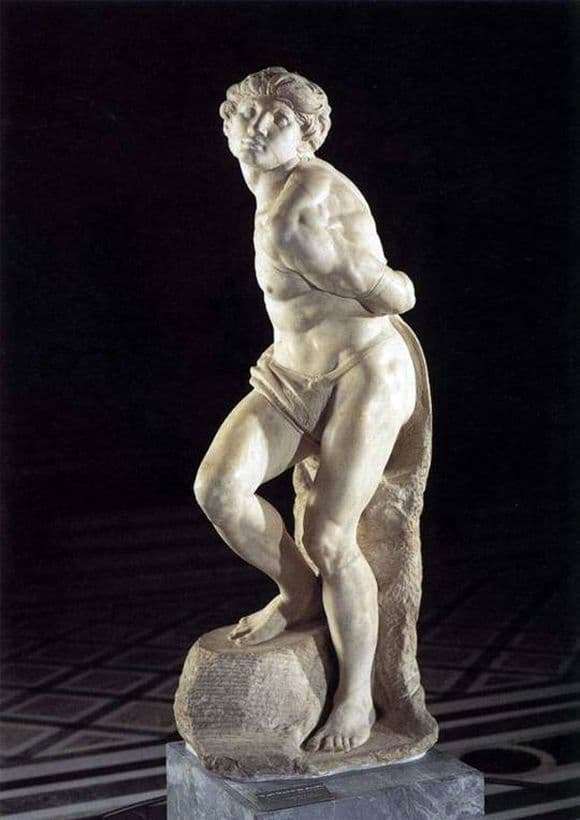Description of the sculpture by Michelangelo “Bound Slave”

In 1513-1516, Michelangelo made 2 sculptures made of marble: “The Dying Slave” and “The Bound Slave”. The latter, many contemporaries nicknamed “The Risen Slave” for the impulse of the figure depicted to freedom. Here she is conveyed in body movements, in tense muscles and in facial expression. The statue is designed for viewing from different sides, which allows the viewer to be convinced of the plastic richness and expressiveness of the statue. If you go around the statue from right to left, you can observe the tragic sequence of the struggle. An image that develops in a time interval appears before the eyes, which at first appears to the viewer in a powerless state.
The figure is in a vertical position only because it is chained. The head thrown back expresses the suffering of a man. But it is enough to take a few steps in a circle, as the statue begins to grow stronger, gain strength, and
Michelangelo prepared sculptures specifically for the tombstone of Julius II. But in the end, preference was given to a more modest version without a large number of sculptures. Subsequently, both sculptures were handed over to Roberto Strozzi, and then to the king of France. Their current location is the Louvre. The captive’s power is amazing: a little more and he will break the bonds with his hands. But the more left the viewer moves, the more weaker the effect: the sculpture loses its strength, its muscles become less strong, and the face acquires the features of suffering.
Michelangelo prepared sculptures specifically for the tombstone of Julius II. But in the end, preference was given to a more modest version without a large number of sculptures. Subsequently, both sculptures were handed over to Roberto Strozzi, and then to the king of France. Their current location is the Louvre. The captive’s power is amazing: a little more and he will break the bonds with his hands. But the more left the viewer moves, the more weaker the effect: the sculpture loses its strength, its muscles become less strong, and the face acquires the features of suffering.
Michelangelo prepared sculptures specifically for the tombstone of Julius II. But in the end, preference was given to a more modest version without a large number of sculptures. Subsequently, both sculptures were handed over to Roberto Strozzi, and then to the king of France. Their current location is the Louvre. But in the end, preference was given to a more modest version without a large number of sculptures. Subsequently, both sculptures were handed over to Roberto Strozzi, and then to the king of France. Their current location is the Louvre. But in the end, preference was given to a more modest version without a large number of sculptures. Subsequently, both sculptures were handed over to Roberto Strozzi, and then to the king of France. Their current location is the Louvre.

 (2 votes, average: 4.50 out of 5)
(2 votes, average: 4.50 out of 5)